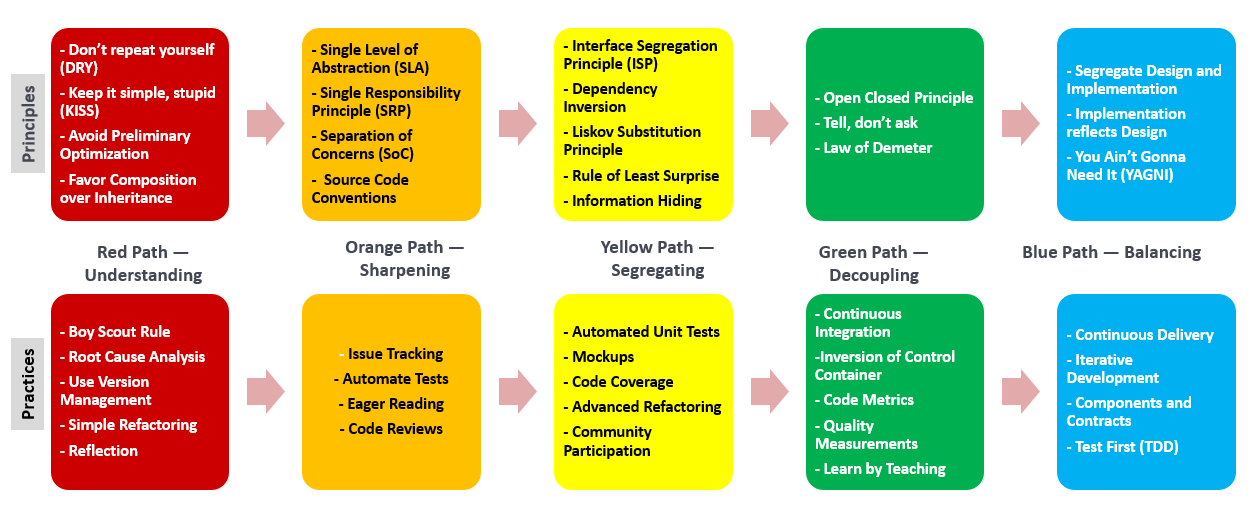How to Practice Clean Code in Software Projects
The clean code movement has been trending for years, but let's look at all the advantages of writing with clean code and how to adopt it on your teams.
Join the DZone community and get the full member experience.
Join For FreeClean Code developer movement has been going on for several years to create and promote the discipline of writing clean code in everyday programming, especially for software developers. Every software developer requires to show their professionalism (quality code writing + principles) while writing the code. Developer focus is to maintain high standard code writing with proper principles and standards in place.
Clean Code is a software term used in the book by Robert C. Martin (formally known as Uncle Bob). Software Developer mail goal is writing the Source Code as “Clean” and also document, concepts, rules, and procedures are self-understandable by others.
The advantages of clean code are more stable and efficiently maintainable programs. As per various studies, 80% of maintenance efforts are going towards the understanding of code written by the development team. Clean code would reduce the time taken to understand the code written by the development team.
Writing Clean Code Challenges:
- Unclear requirements that change frequently
- Lack of clean code training
- Lack of programming correction
- Refactoring of code to clean-up frequently (non-priory factor)
- Sometimes project timelines hit the code quality
Qualities of Clean Code Development:
- Focused while writing Clean code
- Making it simple for writing program
- Code should not be redundant
- Reading code should be pleasant
- Easily extended by any other developer
- Minimal dependencies with other elements
- Smaller code helps developers to understand better
- Write unit and acceptance test cases in place
Principle and Practices of Clean Code:
The Clean Code Developer initiative grouped into five levels or degrees called Red, Orange, Yellow, Green, and Blue. The project level of degree is increasing from Red to Blue in a sequential manner. The reviewer can check the project and tells the level of the project to which degree. Below are the five levels of Principles and Practices for clean code practice. Developer learning/capability would be measured by different levels and practices implemented in the project.

How to Adopt Clean Code Principles and Practices in Team:
For each Clean Code Principle adopts some coding Practices defined. The above diagram show for each path the Principle and Practices. The organization has to motivate / self-motivate how to implement each Principle defined above and implement in project scope from the developer. Developer spends a minimum of 21 days for each level to adopt and implement. End of every day, validate the principles adopted in the code. Otherwise, the process of learning clean code would not be worthy. This action helps to bring to developers minds which principles to be adopted.
Organizations / Project Managers can encourage to conduct Clean Code Challenges between teams to motivate the team efficiently. Ask team members to form a group of 3-5 members. Managers have to provide the Source code to the group and ask them to review the code and identify the issue and provide the assessment in the area of:
- Static / Dynamic code review in
- Design
- Code violations - Critical / Major
- Non-functional requirements like
- Rideability
- Testability
- Debuggability
- Configurability
- Reusability
- Scalability
- OWSAP vulnerability
After review, the team has to provide review assessment report in the below points:
- Top critical/major code violation with evidence in the project with alternative solutions
- Top OWSAP vulnerability with solutions
- Top 3-4 recommendations/suggestions on how to perform the Clean Code activity
Management has to encourage the team to do review internally to adopt clean code principles.
Clean Code movement is an ongoing process in the projects. Management has to create awareness programs regularly to the Developers and motivate them consistently to adopt best practices in the Industry. Conducting internal challenges help the team to motive and practice the Clean Code Principles. Developing Clean Code requires time and practice by the development team.
Published at DZone with permission of Ravi Kiran Mallidi. See the original article here.
Opinions expressed by DZone contributors are their own.

Comments